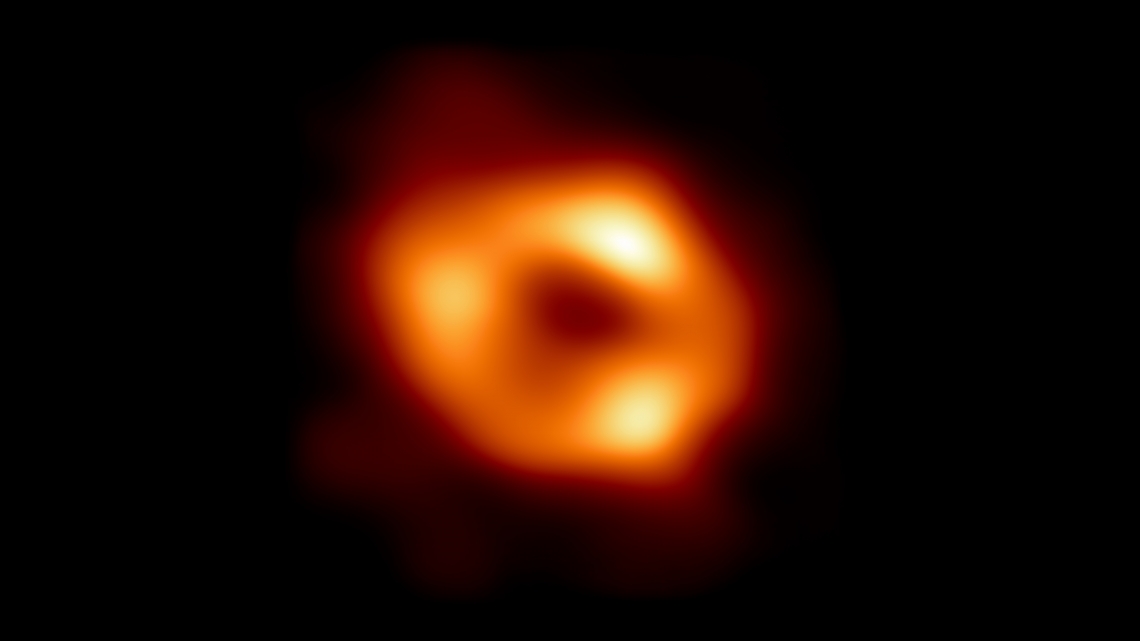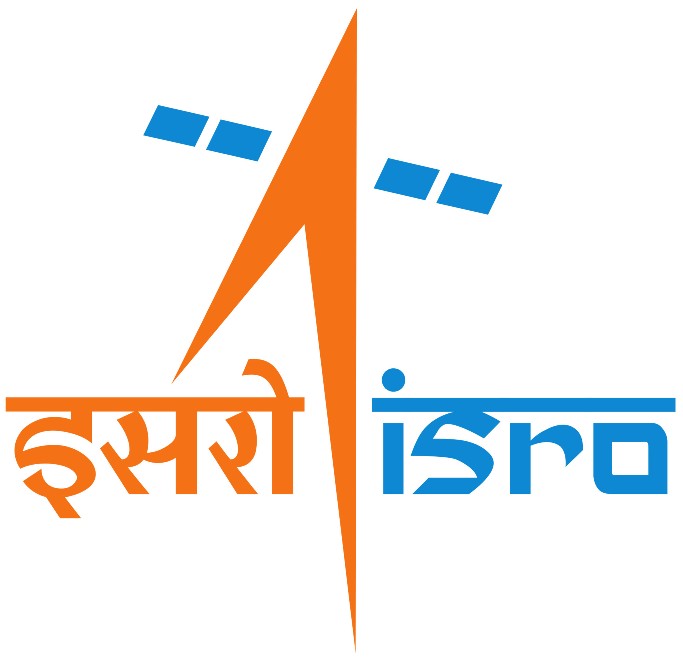
This image of Sagittarius A is the first direct visual evidence of the presence of a supermassive black hole at the center of our galaxy. It was captured by the Event Horizon Telescope (EHT), an array of radio telescopes named after the "event horizon," the boundary of the black hole beyond which no light can escape. (Image: EHT Collaboration)
BERLIN (PTI): Astronomers unveiled the first image of the Supermassive black hole lurking at the centre of our own Milky Way galaxy which is four million times more massive than the Sun, terming it a "gentle giant" while announcing the breakthrough on Thursday.
The finding, published in The Astrophysical Journal Letters, greatly improves our understanding of what happens at the very centre of our galaxy and offers new insights into how these giant black holes interact with their surroundings.
The image shows a fuzzy glowing ring of red, yellow, and white surrounding a darker center. The picture of the black hole known as Sagittarius A* (Sgr A* ) – only the second one ever to be imaged – was produced by a global research team called the Event Horizon Telescope (EHT) Collaboration, using observations from a worldwide network of radio telescopes.
"It is the first direct image of the gentle giant in the center of our galaxy," said Feryal Ozel, an astronomer at the University of Arizona during a news conference in Washington.
"This image shows a bright ring surrounding the darkness, the telltale sign of the shadow of the black hole," Ozel said.
Black holes are regions of space where the pull of gravity is so intense that nothing can escape it, including light.
The EHT achievement follows the collaboration's 2019 release of the first image of a black hole, called M87*, at the centre of the more distant Messier 87 galaxy.
The two black holes look remarkably similar, even though our galaxy's black hole is more than a thousand times smaller and less massive than M87*.
"We have two completely different types of galaxies and two very different black hole masses, but close to the edge of these black holes they look amazingly similar, said Sera Markoff, Co-Chair of the EHT Science Council and a professor of theoretical astrophysics at the University of Amsterdam, the Netherlands.
"This tells us that General Relativity governs these objects up close, and any differences we see further away must be due to differences in the material that surrounds the black holes," Markoff said.
The finding was unveiled during simultaneous press conferences around the world, including at the European Southern Observatory (ESO) headquarters in Germany.
The image is a long-anticipated look at the massive object that sits at the very centre of our galaxy. Scientists had previously seen stars orbiting around something invisible, compact, and very massive at the centre of the Milky Way.
This strongly suggested that this object known as Sagittarius A* (Sgr A*) is a black hole, and the image provides the first direct visual evidence of it.
Although we cannot see the black hole itself, because it is completely dark, glowing gas around it reveals a tell-tale signature: a dark central region (called a shadow) surrounded by a bright ring-like structure.
The new view captures light bent by the powerful gravity of the black hole, which is four million times more massive than our Sun.
We were stunned by how well the size of the ring agreed with predictions from Einstein's Theory of General Relativity," said EHT Project Scientist Geoffrey Bower from Taipei.
"These unprecedented observations have greatly improved our understanding of what happens at the very centre of our galaxy, and offer new insights on how these giant black holes interact with their surroundings," Bower said.
Because the black hole is about 27 000 light-years away from Earth, it appears to us to have about the same size in the sky as a doughnut on the Moon.
To image it, the team created the powerful EHT, which linked together eight existing radio observatories across the planet to form a single Earth-sized virtual telescope.
The EHT observed Sgr A* on multiple nights in 2017, collecting data for many hours in a row, similar to using a long exposure time on a camera.
In addition to other facilities, the EHT network of radio observatories includes the Atacama Large Millimeter/submillimeter Array (ALMA) and the Atacama Pathfinder EXperiment (APEX) in the Atacama Desert in Chile.
This achievement was considerably more difficult than for M87*, even though Sgr A* is much closer to us, the researchers said.
The gas in the vicinity of the black holes moves at the same speed -- nearly as fast as light -- around both Sgr A* and M87*, EHT scientist Chi-kwan Chan, from the University of Arizona, US, explained.
But where gas takes days to weeks to orbit the larger M87*, in the much smaller Sgr A* it completes an orbit in mere minutes. This means the brightness and pattern of the gas around Sgr A* were changing rapidly as the EHT Collaboration was observing it -- a bit like trying to take a clear picture of a puppy quickly chasing its tail, Chan said.
The researchers had to develop sophisticated new tools that accounted for the gas movement around Sgr A*.
While M87* was an easier, steadier target, with nearly all images looking the same, that was not the case for Sgr A*.
The image of the Sgr A* black hole is an average of the different images the team extracted, finally revealing the giant lurking at the centre of our galaxy for the first time.
The effort was made possible through the ingenuity of more than 300 researchers from 80 institutes around the world that together make up the EHT Collaboration.
In addition to developing complex tools to overcome the challenges of imaging Sgr A*, the team worked rigorously for five years, using supercomputers to combine and analyse their data, all while compiling an unprecedented library of simulated black holes to compare with the observations.
Scientists are particularly excited to finally have images of two black holes of very different sizes, which offers the opportunity to understand how they compare and contrast.
They have also begun to use the new data to test theories and models of how gas behaves around supermassive black holes. This process is not yet fully understood but is thought to play a key role in shaping the formation and evolution of galaxies.
Now we can study the differences between these two supermassive black holes to gain valuable new clues about how this important process works, said EHT scientist Keiichi Asada from the Institute of Astronomy and Astrophysics, Academia Sinica, Taipei.
We have images for two black holes – one at the large end and one at the small end of supermassive black holes in the Universe – so we can go a lot further in testing how gravity behaves in these extreme environments than ever before, Asada said.
 Previous Article
Previous Article Next Article
Next Article












The Indian Air Force, in its flight trials evaluation report submitted before the Defence Ministry l..
view articleAn insight into the Medium Multi-Role Combat Aircraft competition...
view articleSky enthusiasts can now spot the International Space Station (ISS) commanded by Indian-American astr..
view article